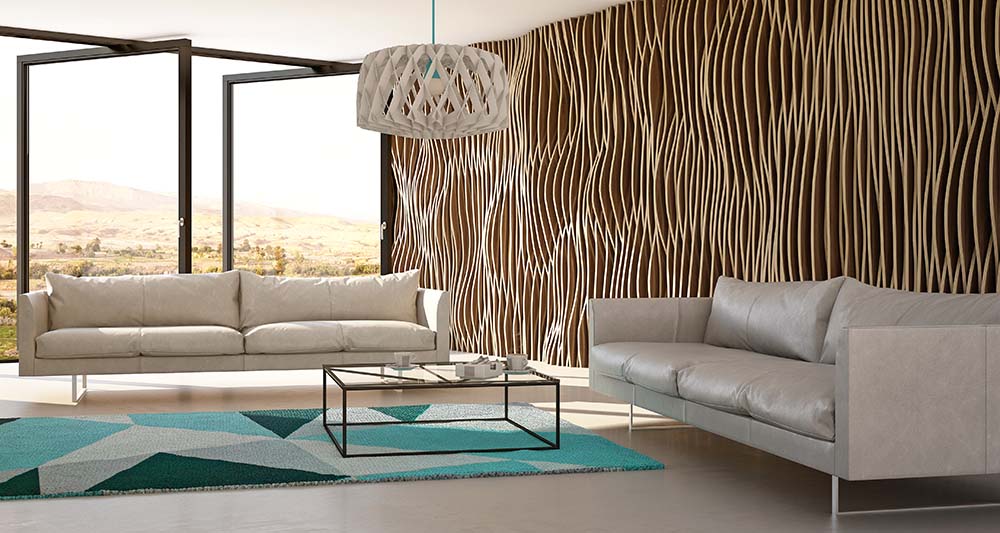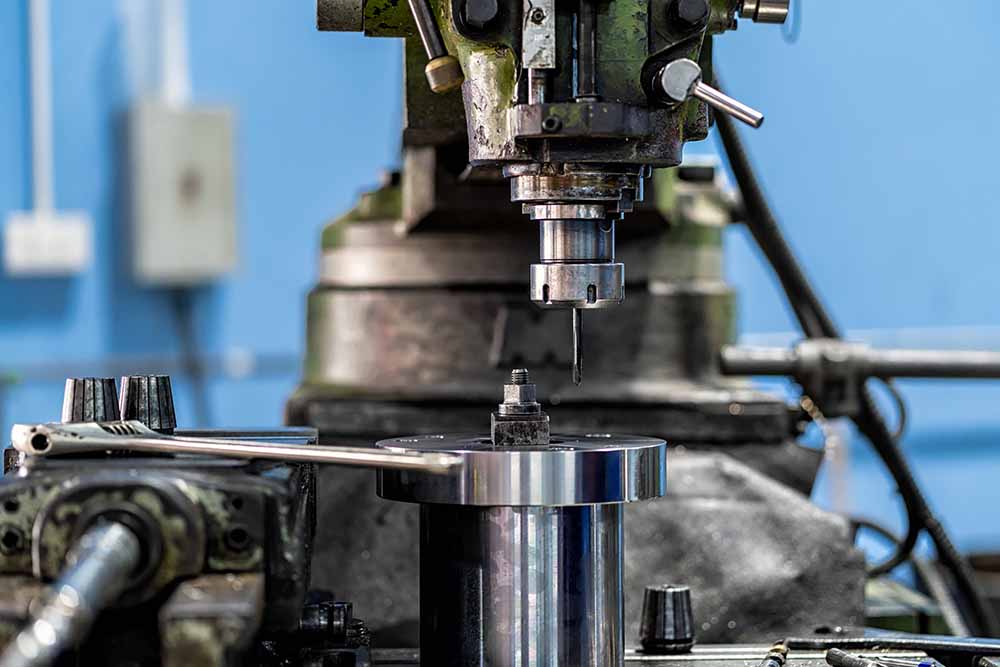- April 9, 2023
Parametric Modeling in CAD and industrial design

The emergence of parametric modeling marked a significant turning point in the CAD industry, with early attempts already heralding the dramatic changes to come. This revolutionary solution has since evolved engineering organizations by providing them with the ability to develop 3D models that accurately depict a product’s behavior through the establishment of relationships between various elements.
How 3D modeling refers to parametric design?
3D modeling involves creating three-dimensional digital representations of physical objects using specialized software. These models can be used for a variety of purposes, including visualization, simulation, and prototyping.
Parametric modeling, on the other hand, is a specific type of 3D modeling that involves using mathematical parameters to define the shape, size, and other attributes of a digital model. These parameters can be adjusted in real-time, allowing designers to quickly make changes to the model and iterate on their designs.
In other words, while 3D modeling is a general term for creating three-dimensional digital models, parametric modeling is a specific technique within 3D modeling that uses mathematical equations to define the shape and other properties of the model.
The emergence of parametric modeling
Fast forward to today, and parametric feature-based CAD tools have become ubiquitous, automating most engineering processes involved in product development. Thanks to these tools, designers and architects can now explore new and daring details in their designs and prototypes, resulting in a new category of design known as “parametric design” – which is seen by many as the future of architecture.
In this way, parametric modeling has transformed the CAD industry and opened up new possibilities for designers and engineers alike, enabling them to create increasingly complex and sophisticated products with greater ease and efficiency.
- What kind of products are possible to create by parametric modeling
- How to find ready-to-use parametric models
- How parameterization facilitates the modeling of common products
What is Parametric Design? The historical overview
Parametric Design is a design process that utilizes parametric modeling to establish the shape and geometry of a design. This involves inputting geometrical parameters into a design tool, which then uses computer processing to create relationships between those parameters. The designer can then experiment with various design variables, allowing them to explore a wide range of design possibilities.
As the core of parametric design, Parametricism breaks the sharp corners and concepts of traditional designs. Today we see free-form architectural concepts with curves, irregular shapes, and sweeping lines. We still call it futuristic, not realizing that we already live in that future. Whether used in architecture or any other industry, the parametric design draws inspiration from nature and its shapes. Because parametric modeling uses algorithms and provides the connection of elements, it is much easier to create and produce complicated designs.

Abstract and futuristic geometric forms were not born with the advent of parametric modeling and design. In fact, ancient civilizations such as the Romans, Greeks, and Persians had already implemented non-standard architectural solutions, some of which still exist today as visual evidence of their ingenuity. These non-standard forms were often built using algorithmic methods and mathematical patterns.
However, one of the most remarkable and genuine examples of parametric design can be seen in Antonio Gaudí’s intricate structural forms in the Colònia Güell Chapel. Gaudí’s approach involved creating an inverted model of the building using string that was weighted down with birdshot. As the strings settled into a shape, they created a compression structure that was then inverted. The resulting model had all the elements of a parametric equation, with a set of independent parameters and outcomes. By changing or modifying any of the independent parameters, Gaudí was able to generate multiple versions of the chapel, showcasing the power and versatility of parametric design.
What is Parametric Modeling?
Parametric modeling, also called parametric solid modeling, and parametric design explains a dimension’s ability to change the model geometry after modifying the dimension value. For non-tech geeks, this sounds quite difficult. So let’s try one more time. Parametric Modeling is the process of creating a digital model that is based on pre-programmed algorithms (parameters). The elements of models are automatically changed instead of being manually manipulated.

The history of Parametric Modeling is related to the term “parametric” originating in maths that was first used in 1988 when Parametric Technology Corporation released the first successful Parametric Modeling software. The first examples of parametric modeling were introduced in the ’80s with 2D and 3D models.
Moretti discussed parametric architecture and parametric design a few decades earlier, presenting the idea of a parametric design on a stadium model and explaining the dependency of parameters and their forms that changed the viewing angles.
As a computer-aided design (CAD) software tool, parametric modeling is a great time saver that eliminates the necessity of redrawing the same design any time one of the dimensions changes. Before parametric modeling, when modifying any of the elements of 3D solid, the designer had to change the other two parts. With parametric modeling, the adjustments are made automatically. Typically, a designer defines parametric rules that create relationships between different elements within the design. Parametric modeling focuses on those relationships between features changing them upon request.
Advantages of Parametric Modeling
- The option to build flexible designs
- Multiple ways to view 3D solid models, including rendering
- Design efficiency
- Quick design turnaround
- Better visualization and approach
- Better integration with downstream applications and manufacturing processes to decrease the development time
- Reduced engineering time
- The capability to reuse existing design data for creating new designs
- A valuable tool for creating
- a model to be used in non-engineering functions
- A clearer view of the future product
- Automated drawing production provided by 3D systems
Best Parametric Modeling Software
Today there is a wide range of software tools for Parametric Modeling that can be grouped according to the project scale:
- Small scale use
- Large scale use
- Industry-specific parametric modeling
Solid Works
Solid Works is a popular platform for engineers and 3D designers to work on mechanical parts professionally.
CATIA
Designed for experienced users of 3D modeling, this CAD tool helps work on complex designs and projects.
FreeCAD
FreeCAD is an open-source 3D program for those who are starting with Parametric Modeling. Still, it can also be used by professionals for mechanical engineering projects.
Fusion 360
Developed by AutoDesk, Fusion 360 is a free CAD tool for direct and parametric modeling with simulation and modeling tools for improvement in 3D parts.
SketchUp Free
SketchUp is another professional tool for architects, urban planners, landscapers, commercial interior designers, and 3D designers.
Parametric modeling impact on custom manufacturing
Parametric modeling has a significant impact on the growth and development of custom manufacturing. By using parametric models, manufacturers can easily create customizable designs and prototypes that meet specific customer needs and requirements. This level of flexibility and customization is critical in industries where mass-produced goods cannot meet the unique needs of individual customers or small-scale production runs.

Furthermore, parametric modeling enables manufacturers to streamline their design and production processes, reducing the time and cost required to create new products. With the ability to quickly modify and iterate designs based on customer feedback, manufacturers can respond to market demands more quickly and efficiently than ever before.
In addition to improving product design and production processes, parametric modeling also has implications for supply chain management. By providing manufacturers with the ability to rapidly create custom components and parts, parametric modeling can reduce lead times and reliance on third-party suppliers. This, in turn, can lead to a more agile and responsive manufacturing ecosystem that is better equipped to handle the demands of modern business.
How to find ready-to-use parametric models
Try to search for “ready-to-use parametric models” in any search engine and find an option. So, how’s it going? We did extensive research and found nothing. In fact, there is a reason why there are no publicly available ready-to-use parametric models. Building a parametric design is a rather complicated process that needs devotion, professionalism, and time.
Mostly, designers do parametric modeling in-demand, and the design initially has an owner. It is evident that models are private property hidden and shared with stakeholders.
While there are currently no resources available that offer ready-made parametric models, our research has uncovered a team that is actively working in this area. It is possible that we may see the results of their efforts in the near future, and we will be sure to share any updates on this development in a separate story. In the meantime, it is important to remember that the process of parametric modeling is highly individualized and requires significant time and skill, making it challenging to produce pre-made models for public use.
In conclusion, the lack of publicly available ready-to-use parametric models is not surprising given the complexity and bespoke nature of the design process. Building a parametric model requires dedication, skill, and time, and is typically done on-demand for specific design projects with an owner. As a result, these models are usually private property that is not shared freely.
While it may be difficult to find ready-made parametric models, there are numerous resources available online to learn about parametric design and modeling techniques, enabling designers to create their own unique models and push the boundaries of design innovation.
